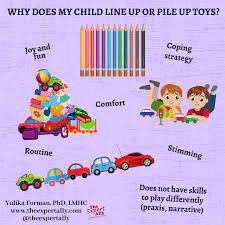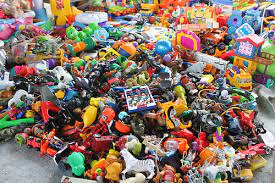When I was twenty-two years old, I wanted two things: 1. To be understood. 2. For people to think I was good at my job....Read more
Parents often see their children making piles of toys, and they get panicked after seeing this. Many thoughts come into their mind about if the child’s misbehavior is normal and if their child needs help with it. This kind of unpredictable behavior makes the situation frustrating and annoying for parents. Parents compare their children to children who don’t usually play with toys in this pattern.

So let us go deep into this topic and clarify that it is a problem or a child’s way of playing like that. You need not worry. Just believe in us, and let us answer all your queries.
Why Do toddlers Pile Up Toys
Toddler piles up toys because it is their way of learning things through experimentation. A child has a lot of ways to learn. He tries to experiment with everything given to him to explore the purpose and use of a particular object. James William says a child is born in a blank state. Child learns from everything that is around in the environment.
He learns problem-solving techniques and how to respond. A kid continuously experiments in different ways, all linked to his cognitive growth. The more they play with the toys, the more their mind gets engaged in it, and their motor skills will be enhanced to a great extent.
- Cognitive development:
A child’s mind responds to everything in the environment. Either he piles up the toys or throws them away. There is a reason behind it. The more they explore and have fun with toys in different ways, the more it will speed up their cognitive development. The child’s cognitive development includes many skills, like thinking and reasoning. It also includes combining, ordering, transforming, or separating objects. They often learn it from piling the toys.
- Trial and error:
A child attempts to do something. If he succeeds, he will continue doing that; if he doesn’t, he will attempt it again. After many attempts, he could understand whether he was playing the right way. Different experimentations with toys, like piling them up, making bridges or talking to them, make a child think better.
- Piling toys improve understanding:
Piling up the toys makes the child understand how their toys are related and how they are programmed. They understand the functioning and mechanism of every toy by playing with it in different ways.
Why does my toddler pile toys on me?
Your child piles toys on because he believes you, his playmate. He is trying to show affection, warmth, love and care just by playing with you. There is nothing to worry about. It would help never to scold your child when he piles toys on you because such behaviors improve the parent-child bond. In fact! Find more opportunities to interact with them joyfully, whether it is through toys.
- A behavior called “Attention Seeking.”
Children who lack attention from their peers often see making scenarios in which they make others look at them. A child’s act of piling up toys on you is just because he wants to seek your attention and interact with you differently. Ensure you attend to your child with love and care because kids deserve it.
- Strengthening the bond
A child is often seen engaged in his imaginative play. Suppose a child involves you in imaginative play, like when piling up the toys. He sees his best friend in you. Don’t disappoint him and make him think you are the best caretaker in the world.
- Expressions through emotions:
Children express their affection to you in different ways, like through facial expressions, behavior, and play. His behavior of piling toys on you means he wants to connect emotionally, and he wants you to question him about his needs. Unless your child reacts problematically to some situations, everything is fine with him.
Why do toddlers get attached to toys?
Toddlers get attached to toys because as a child’s world rapidly changes, they often get attached to people, objects or toys around them. They feel like their toys never judge them. They develop a strong attachment. Attachment to a particular toy makes them feel secure and comfortable.
A child may think that his toy is in complete control and that at least one thing in the world acts according to his desire. If you want to ensure a child’s emotional well-being, let them cherish their toys. Their love for toys may grow bigger and would make them happy.
Some toys are comfort objects
A child believes some toys calm or soothe them. They start feeling better and better with those toys around them.
- Separation from parents at bedtime
Some children make their toys their best friends when they have to sleep away from their parents in their bedroom. It reassures them that they are not alone.
- A toy is a companion in hard times.
A child’s toy is his companion when no one listens to it. They talk, laugh and cry with them. They share experiences with their
toys that they can’t with anyone. Often when kids encounter new situations, they take their toys with them to feel confident and interact with people openly.
- Signs of Anxiety
Parents should look at the signs of anxiety in their children. When a child is unhappy, anxious or sad, he often isolates himself with a toy. Look at all the signs and love them unconditionally so they never feel alone.
Why do toddlers like to make a mess?
Toddlers like to make a mess because it is their developing age, and they explore their surroundings by scattering things, pouring or touching them. They learn the cause and effect of behaving in a certain manner. Children explore the texture of different toys, and they feel good or bad according to it.
Although a child behaving this way may get challenging for parents, parents should create safe places for the child. A child’s creativity and cognitive growth increase when they can make a mess and then play with the things they like most. Let them play, but also make a cleanup time where they have to clean up all the mess.
Stimulation of the sensory system
A child’s senses, like touch, sight and sound, require stimulation. Making the mess of objects lets children explore their environment using all these senses. They would be more active and good at everything they must be.
Why do toddlers give you things?
Toddlers give you things because kids want to connect with people around them and share feelings. They want to initiate a conversation through the language of play. Just like cognitive skills, a child’s social skills also need to be taken care of. Kids want to engage in reciprocal play by giving and taking things.
Empathy and cooperation
Children start to feel for others and cooperate when they are listened to and interact well. Giving and taking things from a child will make you talk to your child more freely and ask them if they want anything. It can improve a child’s emotional development.
Power of Positive reactions
When a child gives things to you, give them positive reactions, and smile at them so they can learn that giving should be done more. Reinforce them with so many rewards and appreciation. There are many positive reinforcements you can give to your child. It totally depends on what they like personally. It could be a chocolate or some words of praise.
Is autism piling toys?
Children with autism also show Piling of toys. As with children with autism, repetitiveness is the most common symptom. The routines are rigid, and they prefer to keep the pattern in which they play. Such children don’t have a barbell or nonverbal speech and lack eye contact.
Signs of autism
The signs of autism are shown in children at 18 months but proper diagnosis is given after five years. A child with autism shows stereotyped behaviors, stays in his world, lacks verbal or nonverbal communication, lacks eye contact and does not respond when their name is called.
Therapy for autism
Therapy for autism includes behavior therapy, occupational therapy and speech therapy. Early intervention is best. When you see such signs in your child, take it seriously and visit a child therapist near you. Piling up toys can be problematic only if other signs of autism also come with it.
Is it normal for a 2-year-old to line up toys?
Yes, it is normal for 2-year-olds to line up toys because, through this behavior, they are exploring this and trying to perceive the world around them according to their understanding.
A sense of control
Some skills like sorting make a child think creatively and let them analyze and discriminate among colors and shapes. A child takes control of his emotions, feelings and behavior by knowing how to order, arrange or manage things . This is a part of their mental growth .
Ordering and managing things
Kids learn to organize their play space, and eventually, their focus and concentration are improved by sorting or lining up toys in a particular manner. Just like adults, toddlers also learn to manage things and put them in a specific order. First ten years of a child’s life is really important and he should be encouraged for his little achievements. The more happy these years are, the successful the child will be as an adult.
What is obsessive behavior in a 2-year-old?
If you see fixation and repetitive behaviors in your child, it is a normal thing. It is just a step in a child’s development. But if you feel such behaviors are persistent and repeated abnormally, it could be a concern.
If you feel your kid is not playing with any other toy and is fixated on only one object, you must see a therapist soon. Extreme distress is another sign your child could show if something is problematic.
Look for delayed milestones in your child to analyze if something is wrong with him. Look for the normal age of achieving a particular milestone and compare it with your child’s. If its delayed you need to get him checked.
Common Obsessive Behavior in Toddlers
A child’s symptoms may include obsessions about fear or worry about germs/contamination. They may also engage in rituals such as counting items repeatedly or show an intense preoccupation with perfectionism, such as needing everything to line up perfectly.
Do non autistic toddlers line things up?
Yes, non autistic toddlers can line things up because not all repeated behaviors cause concern. Some kids want to explore things again and again. Sometimes when they have fun with something, they repeat it again and again to live every moment.
When to worry?
If a child’s repetitive behavior interferes with his daily functioning, it impairs his social life, and such behavior is rigid. They don’t change over a long period and are easily observed by every other person. If you don’t see any such signs, be happy and let the child live how he wants. As a parent, you can observe a child’s emotional well-being and decide where he is lying.
Why does my toddler keep making messes?
The toddler keeps making messes because he works hard to improve his hand strength and fine motor skills by throwing and picking up things. Your child’s talent and fine-motor skills will get better as he or she makes mistakes.
Sensory impressions
They need to get information from their senses to learn about the world around them. The better, the more abilities they can use to learn about their world. Because of this, kids also like to get messy while they eat, and parents should let them.
Conclusion
Parents should show their kids how to clean up, even if it means helping them put things back in the toy box hand-over-hand. Let’s start as soon as possible. It gives them a good sense of freedom and power. Parents shouldn’t be so worried about their kids making mistakes. Of course, the mess could be more important. What you can do with it is what matters. There isn’t a right or wrong way to play, letting kids use their imaginations when exploring.

Related Articles:
- Can Kids Play With Silicone Toys
- Can Jellycat Toys Be Washed
- Why Does My Toddler Make piles Of Toys
- Can You Play Lego Dimensions Without The Toys
- Can Battery Operated Toys Get Wet

When I was twenty-two years old, I wanted two things: 1. To be understood. 2. For people to think I was good at my job. As a first time founder, I remember feeling under-qualified. I felt like an impostor—and it showed. I struggled to communicate my value in a way that my colleagues and potential investors could understand. I realized I needed to clarify my message and use social media as a tool to help me build my personal brand. This would help me look more credible, I thought. So I got to work. I updated my social media profiles, built a personal website, and began sharing my story online. The more content I shared, the more confident I became. And the more confident I became, the more credible I appeared. Now i am writing blogs for madeforkids.co.uk on different topics on kids.
- Latest Posts by Anna Vatuone
-
What Are The Uses Of A Drone
- -
What Are The Uses Of Playhouse
- -
How To Get A Child To Warm Up To You
- All Posts
